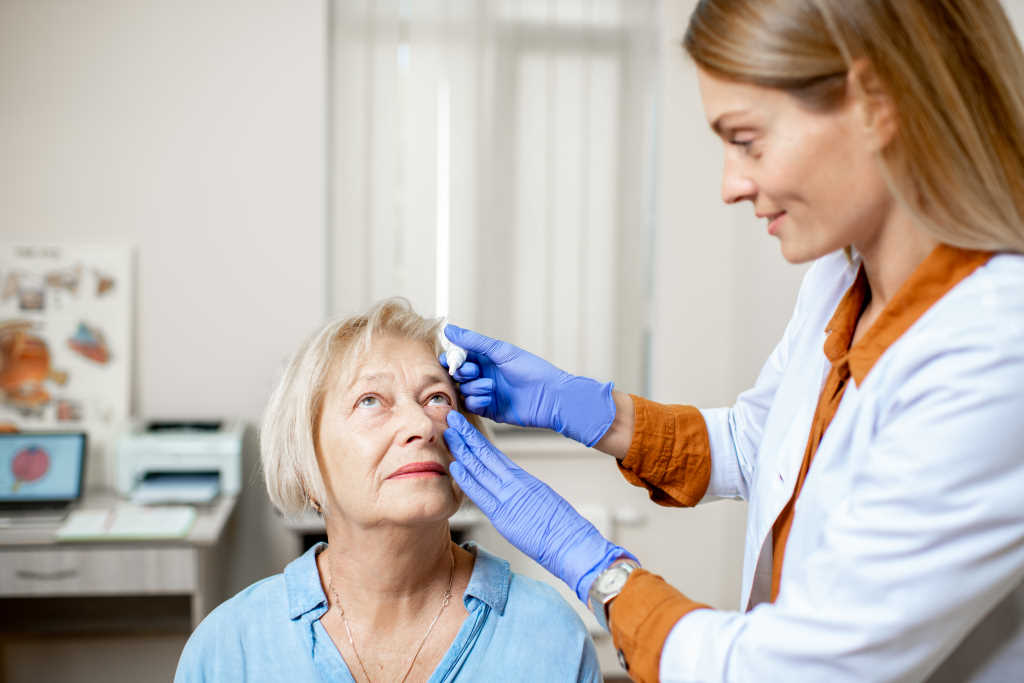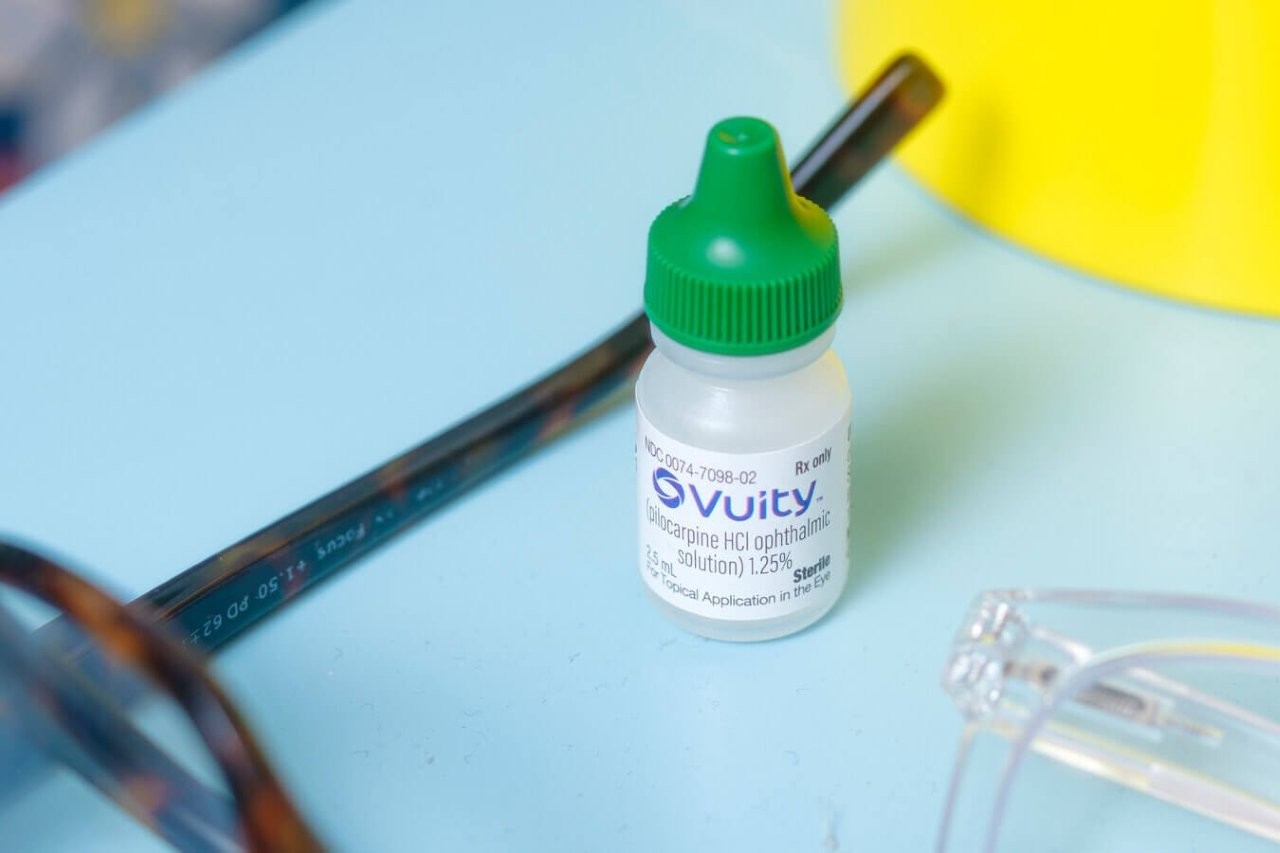LiGHT and Eagle: landmark glaucoma treatment studies
SLT versus eye drops for first-line treatment of ocular hypertension and glaucoma (LiGHT): a multicentre randomised controlled trial
Gazzard et al
Lancet 2019; 393: 1505-16
Review: This observer-masked, randomised controlled trial compared selective laser trabeculoplasty (SLT) to eye drops as an initial therapy in 718 treatment-naïve patients with open-angle glaucoma (OAG) or ocular hypertension (OHT).
At 36 months, there was no significant difference in the primary outcome of health-related quality of life assessed by EQ-5D. However, 74.2% of patients in the SLT group required no drops to maintain target intraocular pressure (IOP) at 36 months. Patients in the SLT group were also within target at subsequent visits and less likely to require glaucoma surgery than the eye drop group. In the UK health system, SLT had a 97% probability of being more cost-effective than eye drops as an initial treatment, the authors concluded that SLT should be offered as a first-line treatment for OAG or OHT.
Comment: This landmark study supports a significant change in the way we should manage our new OAG and OHT patients. The study suggests that uptake of SLT as a first-line therapy in this cohort of patients would lead to a drop-free interval throughout the study period of 36 months in almost three quarters of patients. While the economic assessment is not completely applicable to the New Zealand system, one would suspect that SLT would still come out as more cost-effective than eye drops. Pharmac may have reduced the cost to our healthcare system by limiting available eye drops options to generics, but this has reduced choice and means we cannot offer funded preservative-free preparations.
Of note is that the study included OAG patients with normal IOP, opening the applicability to our normal-tension glaucoma patients, and excluded patients with advanced OAG at presentation (mean deviation better than -12dB in the less-affected eye and -15dB in the more-affected eye). These advanced patients need aggressive IOP lowering and SLT is often skipped in favour of early surgical intervention.
SLT was very well tolerated and the lack of post-SLT complications, including significant IOP rise requiring treatment, is reassuring and means one could consider a similar follow-up timepoint for commencing eye drops. In the study, SLT could also be repeated once if there had been a reduction in IOP after initial treatment; in clinical practice, there is no limit on the number of repeat SLT treatments that can be performed.
Escalation in medical therapy followed National Institute for Health and Care Excellence (NICE) and European Glaucoma Society (EGS) guidelines with prostaglandin analogues as first line, beta-blockers as second line and carbonic anhydrase inhibitors and alpha-agonists as third and fourth line, respectively, which is a useful order to consider in clinical practice.
The lack of difference in the primary outcome measure of health-related quality of life assessed by the EQ-5D is not surprising, since the generic nature of the questionnaire makes it less sensitive to pick up drop inconvenience and side-effects. There were, in fact, 150 aesthetic side effects or ocular allergic reactions in the eye drop group, compared to 30 events reported in the SLT group. Drop-related systemic adverse events were also reported by 14.4% of the eye drop group compared to 6.5% of the SLT group.
Finally, of indirect interest is that patients in this study had their IOP managed by protocol. It would be interesting to see how they fared vs regular clinical decision-making in future publications. For example, eye-specific target IOPs were based on a 20-30% IOP reduction in conjunction with their disease severity based on the Canadian Target IOP Workshop. Treatment was escalated if there was strong evidence of deterioration irrespective of IOP, IOP was above target by more than 4mmHg at a single visit, or IOP was above target by less than 4mmHg with less strong evidence of progression. As well as being useful considerations for your own clinical practice, standardisation of IOP management may make collaborative-care protocols easier to design.
Effectiveness of early lens extraction for the treatment of primary angle-closure glaucoma (Eagle): a randomised controlled trial
Azuara-Blanco et al
Lancet 2016; 388: 1389-97
Review: This multicentre, randomised controlled trial compared clear-lens extraction (CLE) to laser peripheral iridotomy (LPI) and topical medical treatment as first-line therapy in patients with newly diagnosed primary angle closure (PAC) with raised IOP or primary angle-closure glaucoma (PACG).
Of the 419 patients enrolled, 155 had PAC and 263 had PACG. At 36 months, the CLE group had a significantly better health status score, as assessed by EQ-5D, and lower IOP by 1.18mmHg compared to the LPI group. CLE was more cost-effective than LPI/traditional therapy. The authors concluded that CLE should be considered as an option for first-line treatment in PAC with raised IOP and PACG.
Comment: This is another landmark study that suggests a more interventional approach for our patients with high-risk PAC and PACG. It is, however, important not to generalise the results of this study to a wider cohort of patients than was assessed. Particular attention to the inclusion criteria shows that these patients were aged 50 years or older to limit the effect of loss of accommodation, and that those with primary angle closure needed to have an IOP of 30mmHg or greater (further work will be necessary to determine if CLE is favoured in those with less severe PAC disease). On the other hand, patients had clear crystalline lenses. In the context of a significant lens opacity (cataract), lens extraction would be indicated in a significantly wider range of primary angle-closure disease.
It is not clear from the baseline characteristics what percentage of patients had an acute symptomatic display of PAC/PACG at presentation (reduced vision with corneal oedema and mid-fixed pupil), though presumably this was the vast minority. It is important to understand that a chronic and asymptomatic presentation, such as primary open-angle glaucoma, represents the majority of those who present with PAC disease with the gonioscopy findings being the main difference. Because the study protocol stipulated a target IOP of 15-20mmHg (based on degree of optic nerve damage) and treatment escalation (including glaucoma surgery) to achieve this, large differences in mean IOP were not expected between the groups. While the absolute difference of 1.8mmHg favouring CLE was very small, only 21% of participants in the CLE group received any further treatment to control their IOP, compared with 61% who received at least one glaucoma drop in the LPI group. The superior clinical efficacy of initial CLE is supported by the reduced need for further glaucoma surgery (one vs 24 operations).
A concern for any intraocular surgery is the potential for severe intraoperative and postoperative complications, but these were of very low frequency in the CLE group and the net effect small because the number of participants with irreversible loss of vision of more than 10 ETDRS letters was similar in the two groups.
With respect to the cost-effectiveness of CLE, one would anticipate that in the longer-term this would look more and more favourable, since patients who have not needed further IOP-lowering treatment can be discharged to their community optometrist, whereas those still on eye drops or who have had other glaucoma surgeries are often monitored by ophthalmologists for life.

Dr Shenton Chew is a consultant ophthalmologist at Auckland and Counties Manukau district health boards and Auckland Eye. He specialises in cataract surgery and complex glaucoma surgical techniques, including the expanding field of minimally invasive glaucoma surgery.


























